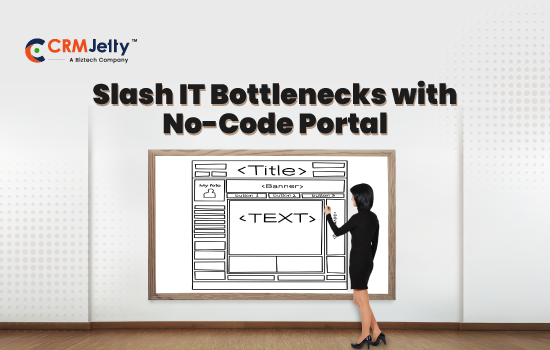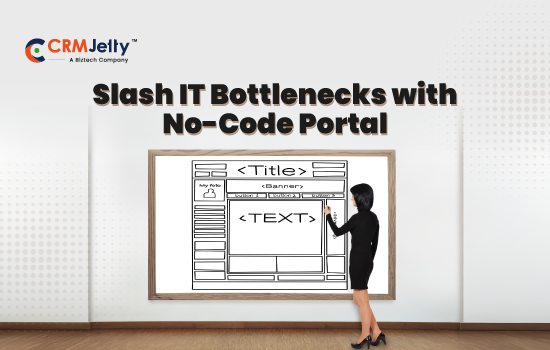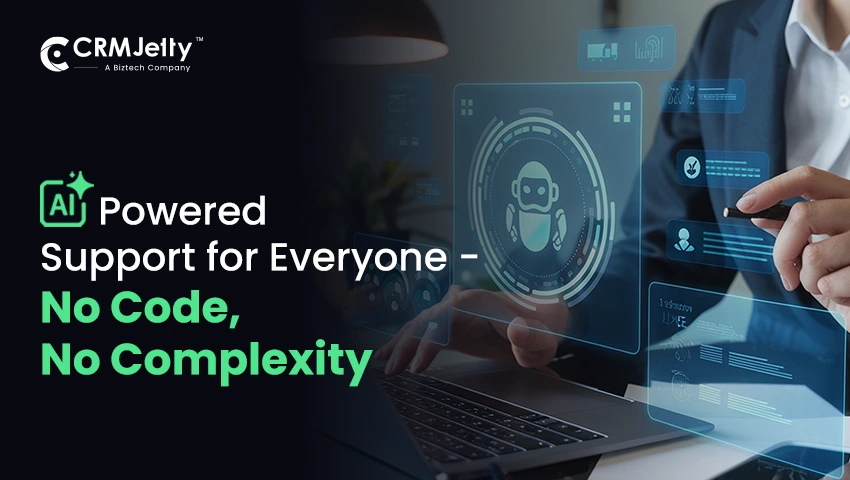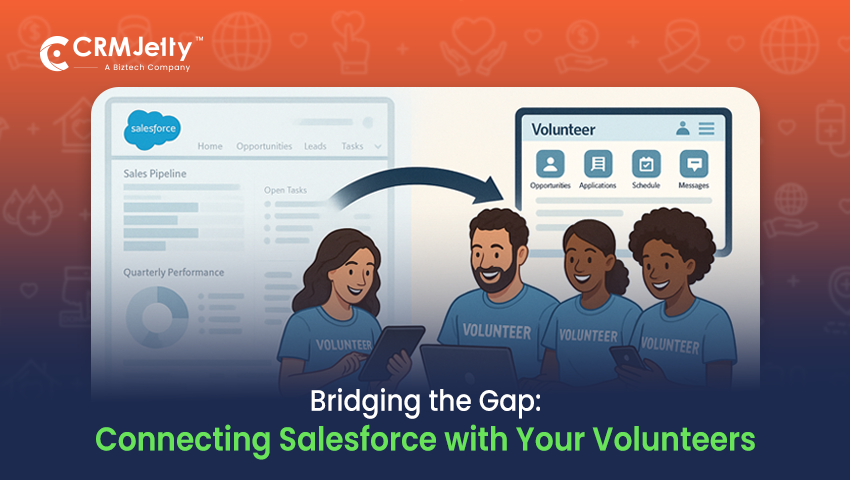How No-Code Portal Slash IT Bottlenecks and Empower Business Teams
Only 26% of organizations can support all the development requests they receive.
If you’re not among that 26%, you’ve got a growing problem.
Business users can’t afford to wait days—or weeks—for simple portal changes. A form update. A layout tweak. A new user view. These should be quick fixes, but instead, they turn into tickets lost in a long dev queue. By the time changes go live, the moment may have passed.
In a world where timing defines outcomes, being stuck in a development queue is costly. It is necessary to identify the problems and address them before they escalate into a bigger issue.
The Problem: Business Users Are Stuck Behind Dev Requests
In many organizations using Salesforce, there’s a familiar cycle. Business users come up with a change. It could be a small update to a form. Or a new data view they want to expose to customers or partners. But instead of making that change directly, they hit a wall.
They need to raise a ticket.
That ticket goes to the development team, which is already stretched thin. From there, it joins a queue of requests, many of them urgent. Developers prioritize, plan, and eventually start working on it. By the time the change goes live, the opportunities are lost altogether.
This isn’t about complex changes. It’s about simple updates that should be fast.
Things like:
- Adding a new field to a form
- Changing a section layout based on user role
- Adjusting data visibility for a record type
All of these should be doable by the business team. But in a traditional Salesforce setup, even these small tasks require Apex coding, sandbox testing, and formal deployments. That’s hours of work and unnecessary back and forth.
So the result is predictable.
Business users either wait for weeks or give up. They accept a clunky experience or find workarounds. IT teams, meanwhile, are buried in tickets that eat up time but add limited strategic value. Nobody’s happy, and progress is slow.
Go-Live Delays for Customer or Partner Portal
Now imagine this same challenge, but at scale. Say you’re launching a full portal for customers, vendors, or partners. Time matters. You may be coordinating it with a campaign launch, a funding cycle, or a new service rollout.
But the go-live timeline doesn’t belong to the business. It’s driven by development.
Every part of the portal, like forms, views, and access rules, needs to be coded or configured by someone with technical skills. Even small edits go through dev-test-deploy cycles. This slows everything down.
Instead of going live in days, it takes weeks. In many cases, it takes months.
And by the time it’s ready, you may have missed the moment. A competitor launches first. A grant cycle closes. A partnership goes cold.
These delays don’t just cause frustration. They result in missed revenue, lower impact, and slower growth.
High Cost for Basic Configuration Updates
What makes this worse is how expensive even basic updates can become.
Let’s take a common example. You want to add one new field to a form in your portal. That seems like a quick fix. But in Salesforce, that change might involve:
- Writing or adjusting Apex code
- Testing it in a sandbox
- Having a developer validate and deploy the change
- Running QA to ensure nothing breaks
It’s not just time-consuming. It’s costly. You’re paying for developer hours, admin reviews, and testing cycles for a single field.
Now multiply that across teams and requests. The marketing team wants to update a campaign form. Support wants to tweak case intake fields. Partner teams need a layout change for a specific region.
All of this stacks up. And since business users can’t make the changes themselves, they either absorb the delay or accept the cost.
Inability to Experiment or Test Campaigns Quickly
Marketing and service teams thrive on flexibility. They want to test things. Try a new user journey. Launch a limited-time campaign. Run a small pilot with select users.
But without a simple way to create or update a portal, they can’t.
Everything has to go through IT. Every experiment needs a developer to get involved. That makes quick testing impossible.
Ideas that should take a day now take a week. Or longer. And often, they get dropped completely.
Without a no-code way to adjust or launch a portal, experimentation becomes expensive. And most companies can’t afford to waste time testing something that may never go live.
Constant Dependency on Technical Teams
The real problem here isn’t the number of requests. It’s the process behind them.
Even the smallest change goes through a set routine:
Business user → Ticket → Developer → UAT → Deployment
This loop creates friction. It slows down response time. And it pulls technical resources into work that could easily be handled by the business if they had the right tools.
IT teams are stuck handling routine portal edits. Business teams are frustrated because they can’t act on their own. This causes tension, delays, and ultimately hurts productivity across departments.
A no-code solution could break this cycle. But without it, everyone stays stuck in the same inefficient loop.
Missed Revenue and Poor Stakeholder Experience
The result of all this? Real business loss.
Customers are unable to self-serve, which increases support costs. Partners and donors face outdated workflows, which damages trust. Delays lead to missed deals. People lose interest. Revenue slips through the cracks.
Portal is supposed to improve the experience for everyone involved. But when updates are slow and ownership is limited, portals become blockers instead of enablers.
They feel outdated, unresponsive, and hard to use. And that reflects poorly on your business. Your customers notice. Your partners notice. And your team definitely notices.
Instead of driving engagement, your portal becomes a pain point. All because business users couldn’t make a few simple changes.
The Solution: CRMJetty’s No-Code Salesforce Portal
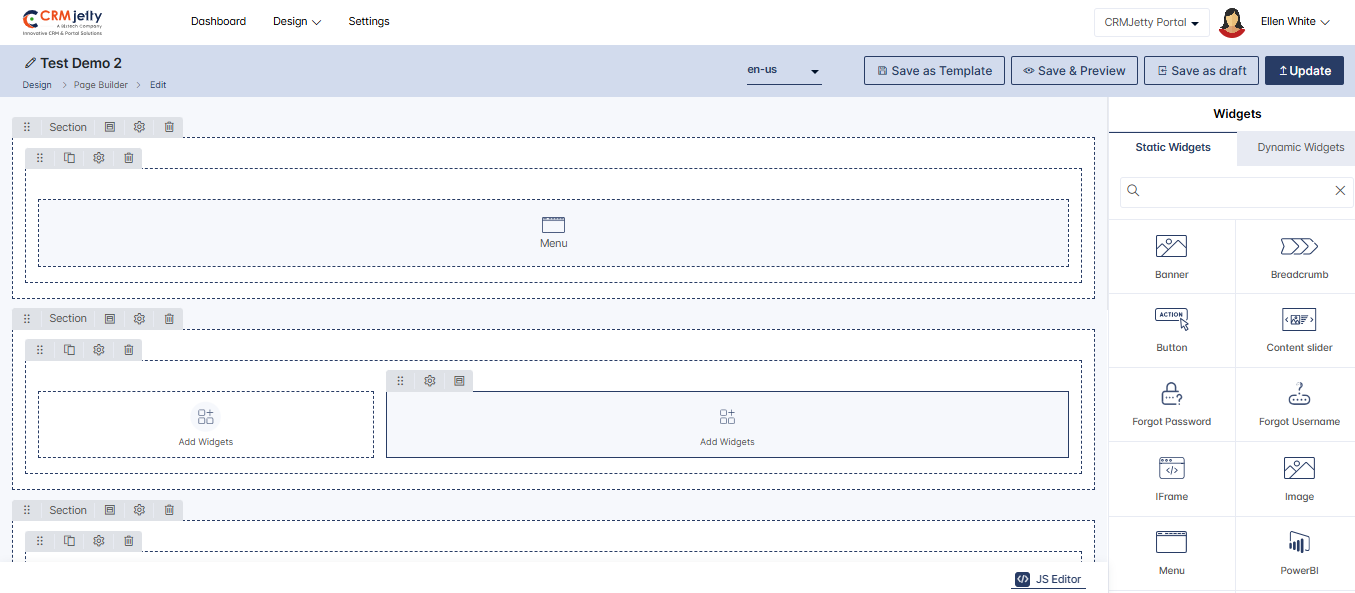
CRMJetty offers a powerful no-code portal builder that connects directly with Salesforce. It’s built for business users—those who need to get things done fast but don’t have the time or skills to deal with Apex or Visualforce.
Everything happens through a secure, user-friendly interface. You don’t need to code. You don’t need to rely on IT. You just log in, configure, and go.
This portal builder lets non-technical teams do what used to require multiple dev tickets. Whether it’s setting up a new form, changing the layout for a specific user group, or publishing a quick update, the entire process is simplified.
Here’s what your teams can do with CRMJetty:
- Build forms using a drag-and-drop editor or natural language prompts
- Expose CRM records securely with role-based access
- Control data visibility by profile, user type, or role
- Update layouts and workflows instantly without waiting on developers
- Publish changes directly to the live portal—no staging or long deployment cycles
The portal syncs directly with your Salesforce environment, so data stays consistent and secure. There’s no duplication. No sync delays. Everything is live and accurate.
Why This Changes Everything
CRMJetty’s no-code Salesforce portal builder does more than just save time. It transforms how teams work.
1. Faster Go-to-Market
Business teams can move from concept to live portal in a matter of hours. Whether it’s a new partner dashboard, customer onboarding flow, or time-sensitive campaign, they can launch it right when it’s needed.
2. No More IT Bottlenecks
Teams take ownership of their processes. Developers no longer get bogged down by minor UI updates or configuration requests. This frees them up for strategic work.
3. Real-Time Salesforce Data
Portal widgets pull and push data directly to Salesforce in real time. No external tools. No delay.
4. Built-in Access Control
Role- and field-level permissions mirror Salesforce’s security model, so users see only what they’re allowed to.
5. AI-Powered Configuration
Not sure where to start? Just describe what you need. CRMJetty’s AI will help generate forms and logic based on your request.
This is what business agility looks like—with zero code and full control.
Why Not Use Experience Cloud?
Salesforce Experience Cloud offers strong capabilities, but it’s not built for speed or simplicity. It relies heavily on developers, even for small updates. The learning curve is steep, and minor changes often need custom code. Moreover, its rigid structure makes it difficult for business teams to adjust things on their own. That leads to delays, higher costs, and limited flexibility.
CRMJetty’s Salesforce portal without coding, solves this. It gives you the same level of Salesforce data control but with drag-and-drop simplicity. Business users can act fast, without developer help or complex deployment cycles.
Quantifying the Impact
Let’s break down the difference a no-code Salesforce portal can make compared to Experience Cloud.
| Scenario | Experience Cloud | CRMJetty No-Code Portal |
|---|---|---|
| Form Update | Requires Apex/dev involvement | Drag-and-drop or natural language input |
| New Data View | Custom development needed | Add dynamic widgets in minutes |
| Role Access Change | Complex, admin-heavy setup | Visual access control, no code required |
| Time to Deploy | Weeks or months | Same day—sometimes within hours |
| Total Cost | High (licenses + dev time) | Flat pricing, no developer needed |
Built for Salesforce Admins & Business Teams
- Sales teams can create lead portal or update flows without technical delays
- Partner managers can adjust onboarding steps without IT
- Support teams can spin up knowledge or case portal tailored to roles
- Marketing can test campaigns with real-time Salesforce data exposure
Everything is fully integrated with your Salesforce instance, respecting object structures, field-level security, and sharing rules.
Secure by Design
- OAuth-based secure login with Salesforce
- Granular access control using Salesforce roles/profiles
- Activity audit logs and field-level visibility controls
- Data stays inside your Salesforce environment always
Real-Life Example
A fast-growing nonprofit using Salesforce NPSP needed to build a donor portal — fast. They had:
- No in-house developers
- A tight launch deadline
- Frequent change requests from the fundraising team
Using the CRMJetty portal, they built a fully functional donor self-service portal in less than a week. The fundraising team now owns the portal: updating donation forms, viewing campaign responses, and managing donor profiles, all without touching code.
Outcome:
✅80% fewer dev requests
✅3x faster update cycle
✅Happier stakeholders and donors
Unblock Your Business Teams. Unleash Salesforce
CRMJetty’s no-code Salesforce portal for business users puts control in the hands of business users. No more waiting on IT. No more dev backlogs. Just a fast, secure, Salesforce-connected portal that your teams can build and manage on their own. Whether you’re in nonprofit, education, insurance, or any other industry, the goal is the same: move faster, reduce friction, and deliver better stakeholder experiences. With CRMJetty, you get the flexibility you need, without giving up control or security. Start building smarter portals without code. Get in touch with our team.
All product and company names are trademarks™, registered® or copyright© trademarks of their respective holders. Use of them does not imply any affiliation with or endorsement by them.


